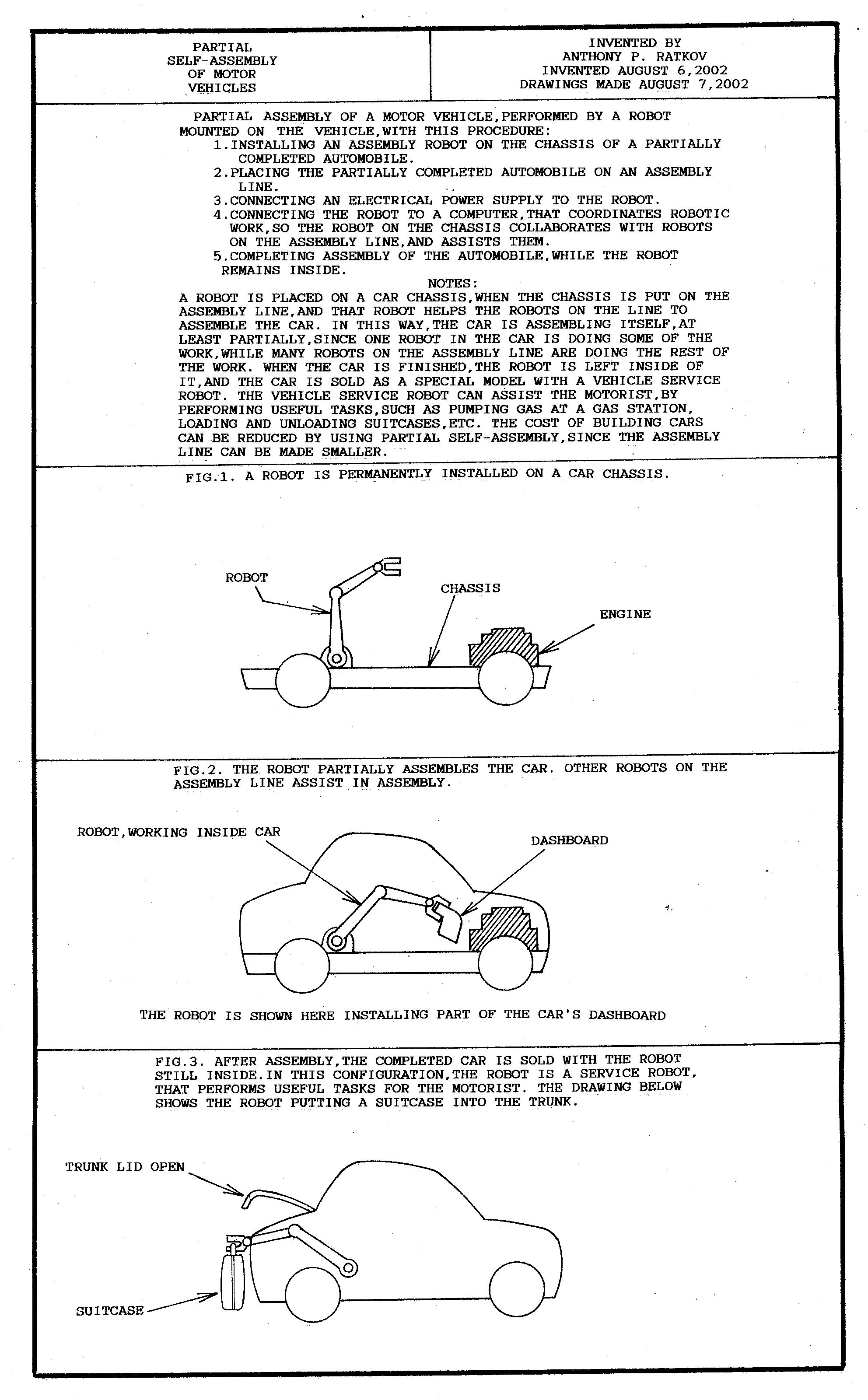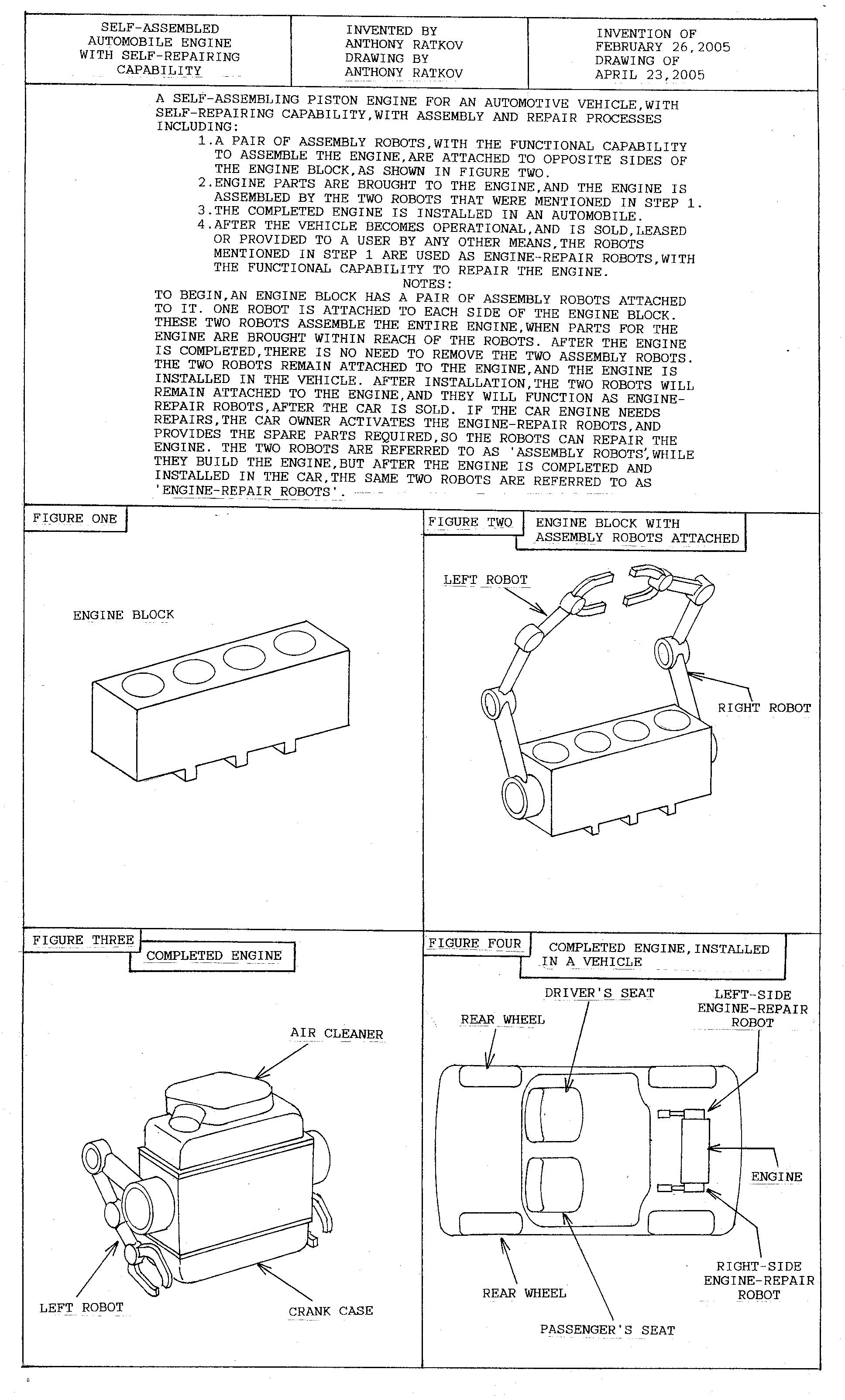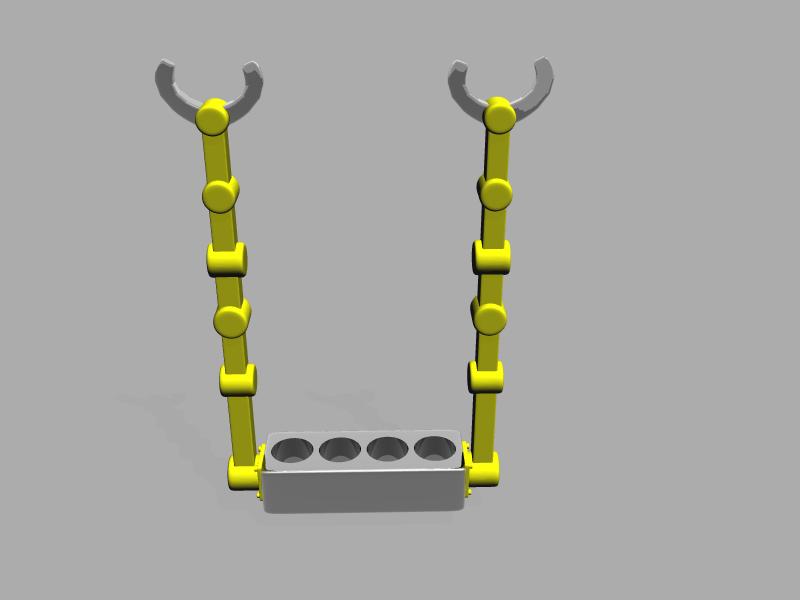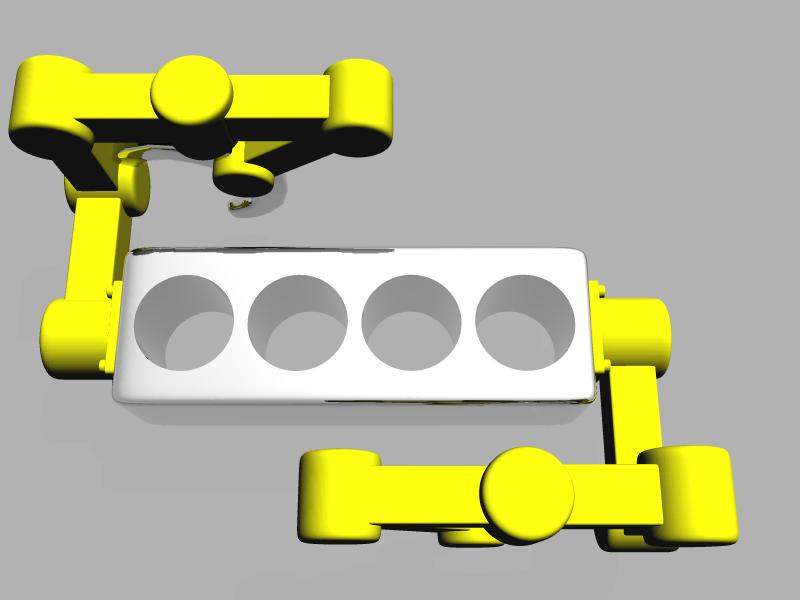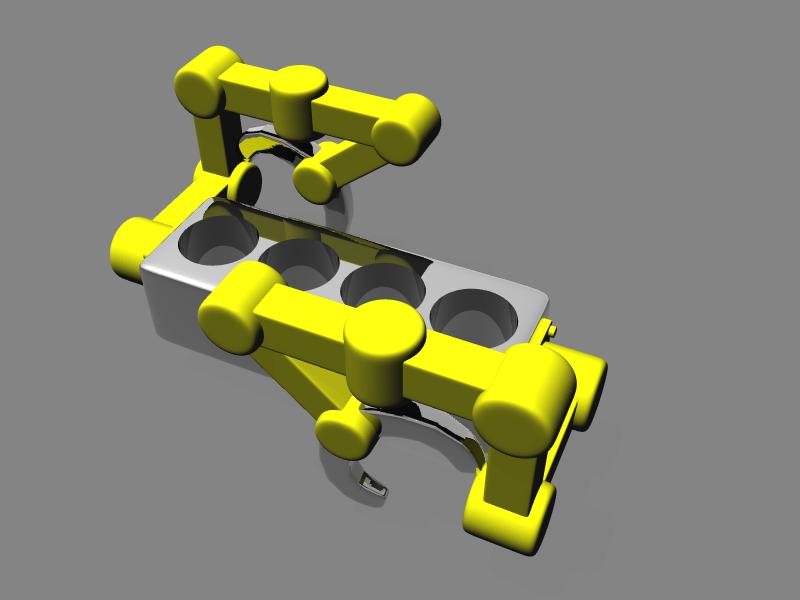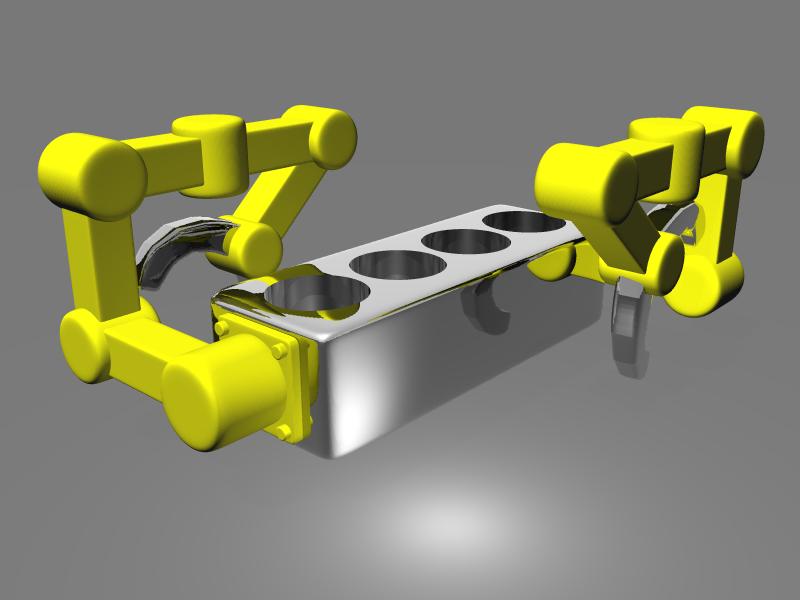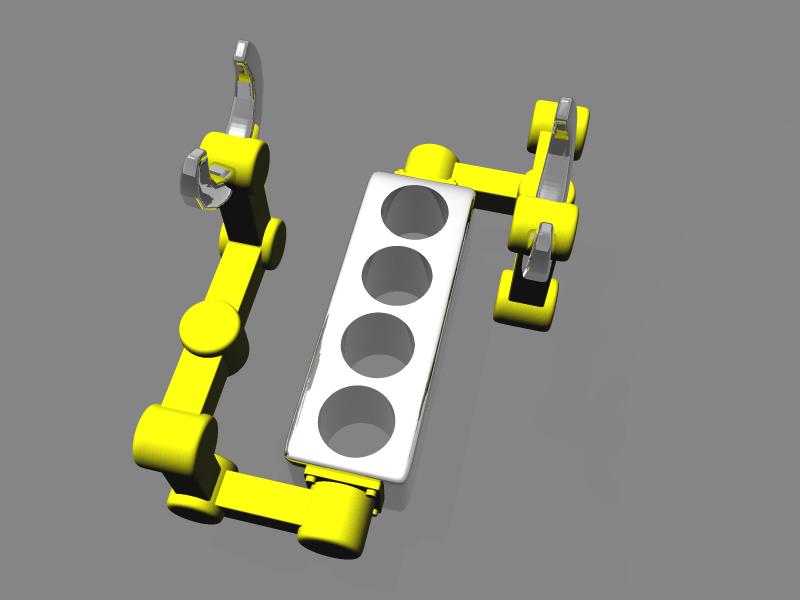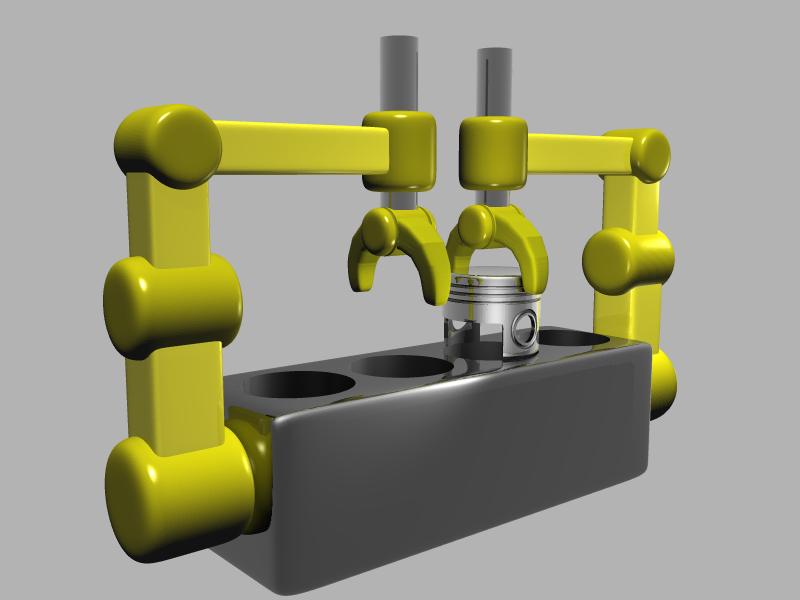Vehicle Self-Assembly
The phrase 'vehicle self-assembly' implies that a car can build itself without any assistance from human workers. When I first proposed this invention in August of 2002, I called it 'partial self-assembly' because I assumed that the machine could build only part of the car, and human workers would be needed to build the rest. If you ask whether it's possible for a car to build itself I'd say it depends upon how you define the word 'car.' In the case of this invention, the definition of the word 'car' means the complete car, plus the assembly robot that is attached to the car. The assembly robot is what is actually building the car. An assembly robot (or several assembly robots) may be temporarily or permanently attached to the unibody structure of a car, and the robot (or robots) assemble the car by adding parts to the car, and attaching the parts. The unibody would already be painted, before the assembly robot is attached to the unibody. After the assembly of the car is complete, the robot may be removed, or the robot may remain attached to the car. If the robot remains attached to the car, it becomes a vehicle service robot. Vehicle service robots are mentioned elsewhere on this website.
The illustrations above show the basic invention for self-assembled cars. These illustrations were made between August and October of 2002.
A self-assembled car should have a self-assembled engine. The illustrations above show the invention for engine self-assembly. You start with an engine block (a four-cylinder engine block is shown in the drawings above, although this could also be done with six, or eight-cylinder engines.) and you attach assembly robots to the engine, then you start handing parts to the assembly robots. The assembly robots put the engine together by attaching the parts to the engine. Although only two assembly robots are shown attached to the engine block in the drawings above, you could attach four, six, or more assembly robots to the block. In this system, there would be worker standing there taking parts out of boxes, and this worker hands the parts to the assembly robot while it is doing the actual work of building the engine, so if you were standing there watching it, it would look like the engine is building itself. The human worker who is taking parts out of boxes and handing the parts to the assembly robots can be replaced by a robot, too, and in that case, you would have a totally robotic system, that could build the engine with no human intervention required. These illustrations were made between February and April of 2005.
The computer-graphic illustrations above show engine-assembly robots attached to an engine block.
Since the robot assembles the engine in the factory, it is also capable of taking the engine apart on the road, if a roadside repair is needed. Let's take a look at the sales scenario and the repair scenario. The sales scenario describes a typical sales pitch involving a customer and a salesman. The repair scenario involves a motorist whose car breaks down on the road, and the robot performs a roadside repair.
Sales Scenario:
A customer goes into a car dealership, and he's interested in buying in a car. The salesman shows him a car, and the customer wants to buy it. The salesman opens the hood, so the customer can see the car's engine. When the customer sees the engine, he sees the repair robots that are attached to the engine. He asks, 'what are those robots doing on the engine?' The salesman replies that the robots are engine repair robots, and he explains that these robots can perform basic repairs on the car's engine, if the engine needs to be repaired. The salesman also tells the customer that if a major repair is needed, he should bring the car to a repair shop.
Repair Scenario:
A man driving a car has engine trouble and his car stalls, so he pulls over to the side of the road. A light on his car's dashboard indicates that a roadside repair may be possible. A digital display asks the driver if he wants to attempt a roadside repair. The driver pushes a button indicating that he wants to try to repair the car. The car's computer analyzes the problem and then the car's computer tells the driver that a few spare parts are needed. The driver uses his cellular telephone to call a store that sells auto parts and he tells them he needs spare parts for a roadside repair. The driver reads a list of parts from the car's digital display, and the delivery driver gathers the parts. The driver tells the delivery driver where his stalled car is located.
The delivery driver goes to the location where the stalled car is parked, and he brings the parts with him. The delivery driver does not need any training in car repair, because the car's engine-repair robots are going to do the repair work by themselves. The driver of the stalled car opens his hood and the delivery driver hands the parts to the robot, one by one, as the robot repairs the engine. After the robot has repaired the car's engine, the delivery driver can leave and the owner of the car can start his car, and drive away. In theory, this level of functioning is possible.
